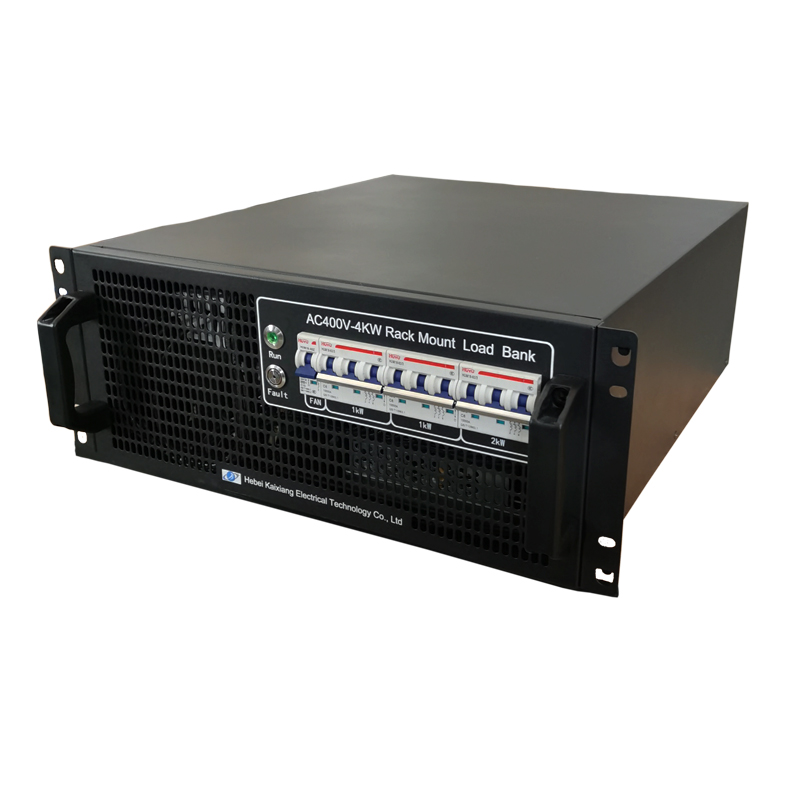Data Center Load Bank: Its Vital Roles and Functions
Time:2024-09-20
The data center load bank, as a crucial device in the realm of data center testing and maintenance, plays an indispensable role. Its primary functions are manifested in the following aspects:
Rack-mounted load bank for data center
1. Simulating Real-World Load Scenarios
The data center load bank is capable of simulating various complex load scenarios, including but not limited to high currents, high power demands, and transient changes, to test the performance of power systems, UPS (Uninterruptible Power Supply) units, generators, power distribution units (PDUs), and the entire electrical infrastructure within the data center under extreme or normal operating conditions. This simulation capability ensures stable and reliable power supply for the data center, preventing service interruptions caused by power fluctuations or failures.
2. Performance Testing and Verification
By applying different levels of load, the load bank conducts comprehensive performance tests on critical data center equipment, encompassing efficiency testing, overload capacity testing, temperature rise testing, protection mechanism validation, and more. These tests help assess whether the equipment's performance parameters meet standards, identify potential design flaws or manufacturing issues, and facilitate necessary adjustments and optimizations before official operation.
3. Troubleshooting and Diagnostics
In cases of power failures or performance degradation within the data center, the load bank serves as an effective troubleshooting tool. By gradually increasing or decreasing the load and observing system responses, it pinpoints fault locations, analyzes causes, and provides accurate information for subsequent repair or replacement work. Additionally, the load bank assists in verifying whether the repaired system has resumed normal operation.
4. Capacity Planning and Expansion
As data center operations expand, so does the demand for power. The load bank plays a pivotal role in capacity planning and expansion. By simulating potential future load levels, it assesses the carrying capacity of existing electrical infrastructure, providing a scientific basis for data center expansion and upgrades. It also aids in designing reasonable power architectures for new data centers, ensuring they can meet business needs over an extended period.
5. Energy Conservation and Efficiency Assessment
Data centers are significant energy consumers, making energy conservation and efficiency improvements a top industry priority. The load bank is instrumental in assessing data center energy efficiency. By measuring system energy efficiency indicators (such as PUE, DCiE) under varying load conditions, it identifies inefficient segments, providing data support for implementing energy-saving modifications. Furthermore, the load bank verifies the effectiveness of energy-saving measures, ensuring the upgraded data center achieves anticipated energy-saving targets.
In conclusion, the data center load bank plays an irreplaceable role in ensuring stable data center operation, enhancing equipment performance, optimizing resource allocation, and promoting energy conservation and efficiency. As data center technology continues to evolve, the functionality and performance of load banks will also advance, providing even stronger guarantees for the efficient and reliable operation of data centers.
News Recommendation
-
 2024-09-11
2024-09-11TRIUMPH LOAD EXHIBITING AT Enlit Europe 2024 -BOOTH 7.H08
-
 2023-04-21
2023-04-21TRIUMPH LOAD EXHIBITING AT DATA CENTER WORLD GERMANY 2023-BOOTH F909
-
 2023-04-06
2023-04-06TRIUMPH LOAD EXHIBITING AT ELECTRIC POWER TECH KOREA 2023 – Booth G109
-
 2022-05-05
2022-05-05What is the role of ac load bank for power supply?
-
 2022-05-05
2022-05-05What is the role of the load bank?


